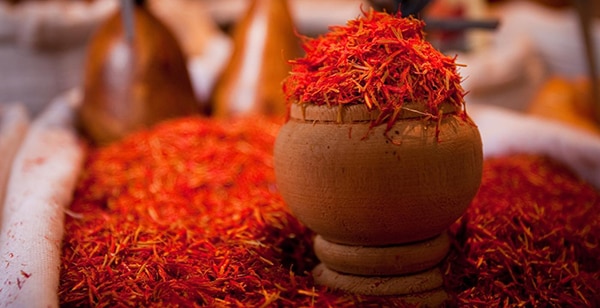Color reverberates through our lives, weaving an intensity or subtlety, imprinting deep emotional tones. I love everything about color as our world would be dull, monotonous and flat without the vibrancy of color. My color crush today is saffron, a reddish golden yellow that derives from the flower, “Crocus sativus” and is hand harvested from the three stigmas, when crushed, develops a reddish golden hue. Saffron is also prized as the most expensive of spices as it takes 13,125 stigmas to make an ounce of saffron, so you can see why so much mystery and magic is associated with this ancient plant. Cleopatra supposedly took saffron-infused baths to create extra beauty. Alexander the Great used it to heal his wounds in battle and still, today, saffron is believed to be an anti-depressant, hinder the onset of Alzheimer’s and fight cancer. Saffron is widely used in Iranian, Indian and Spanish cooking, not only for its bright color but for its particular perfume flavor in stews, kebobs, rice dishes, paella and sweets.
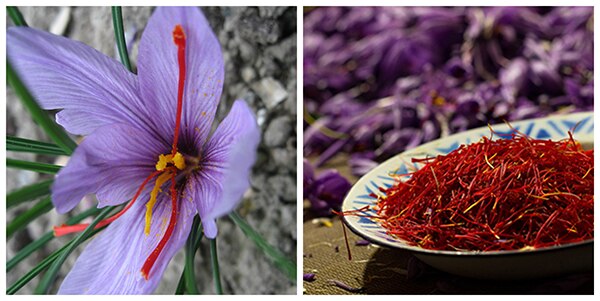
What intrigues me is the difficulty of harvesting saffron. For only a few weeks each fall, this crocus blooms. Early in the morning, the harvesters dash out to the fields to pick the flowers, dash into the production rooms, and gently pluck out the delicate bright red filaments (remember only 3 per flower). The filaments are then dried and are ready for use. It takes about 150,000 flowers to produce a little over 2 pounds of saffron. You can surely guess that this precious spice has created an illegal market that some call the “gold cuisine.” Counterfeit saffron abounds in the marketplace as dyed corn silks or other flower thistles without the special aroma, real color and remarkable taste. Authentic saffron is packaged in long-yellow strands with both the yellow stem and the red pistil. Tradition tells us that the grinding of saffron is a ritual and can be kept for years in a sealed container. Never put saffron in the freezer and keep it out of the light and don’t overdo seasoning with saffron as it is too precious to waste. An Iranian legend reminds us that consuming too much saffron will cause you to die from too much laughter. Saffron is also a highly volatile dye and can stain as its bright golden color, when suffused with liquid, heat or crushing, is almost impossible to remove.
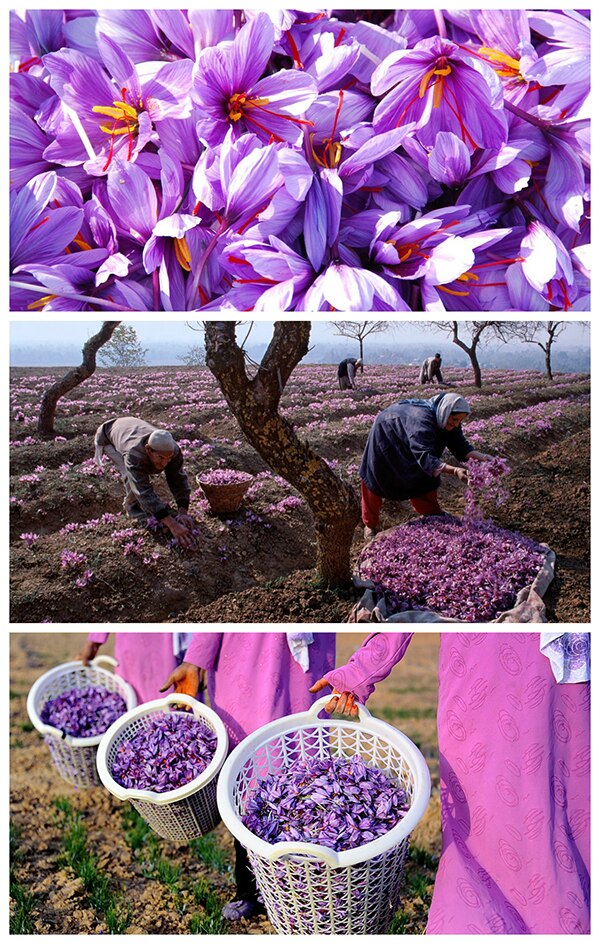
The color saffron is associated with the goddess of the dawn, Eros in Greek mythology and Aurora in Roman mythology and is a sacred color in many Eastern religions as a sign of sacrifice and sacredness as evidenced by the saffron robes of Buddhist monks and in the iconography of India. A present day street artist, Christo, decorated Central Park in New York with heavy banners of saffron colored flags that billowed in the air, creating “The Gates” of Central Park. Christo also paved the paths of a park in Kansas City with miles of saffron glossy material as walkers and runners explored this glorious color underfoot. As a toddler, my Mom ran with me in my jogging stroller down these “Wrapped Walkways,” so I feel an intimate connection to this artist and this impressible emotional color.
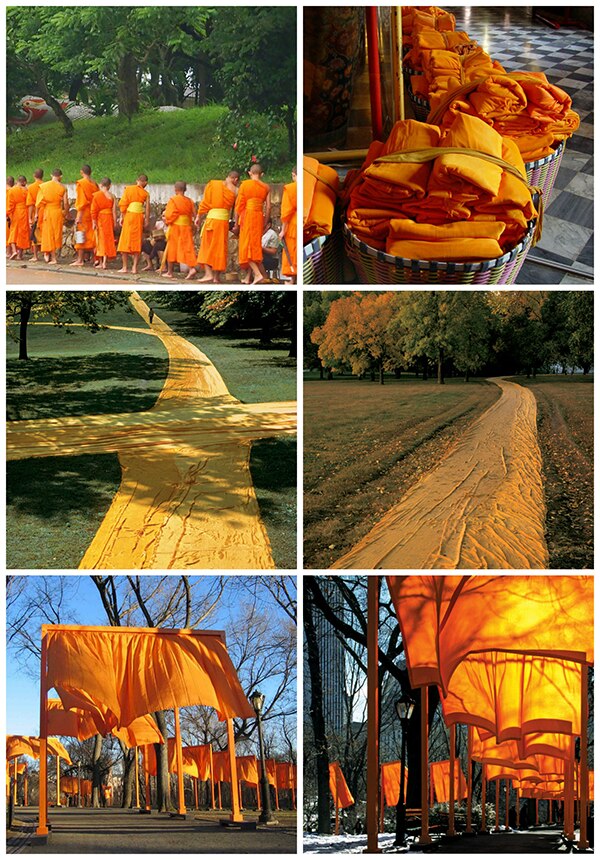
Although Christo has not envisioned a monumental installation since 2005, the color saffron continues to provoke his creative spirit as Christo envisioned walking on water. A new elaborate wave of shimmering saffron has recently been fabricated across a waterway on Italy’s, Lake Iseo, near Milan and Venice. “The Floating Piers” stretches along a 3 kilometer path (nearly two miles), connecting two small islands in Lake Iseo and then extending 2.5 kilometers through the streets of the mainland. Shimmering saffron material undulates underneath your feet as the movement of water is mimicked as you softly experience the rolling waves. The puckered saffron fabric was designed to change color during the time of day and weather conditions. Christo remarked: “It’s actually very painterly, like an abstract painting, but it will change all the time.” All of Christo’s art projects are transient and temporary and are removed and recycled, so this saffron bridge sensation is truly street art of the moment. For Christo, the importance of this conceptual art piece is… “the nomadic quality. The work needs to be gone, because I do not own the work, no one does. This is why it is free.” Although this incredible and beautiful feat of engineering and movement ended on July 2, 2016, here are some gorgeous photos of Christo’s, “The Floating Piers.”
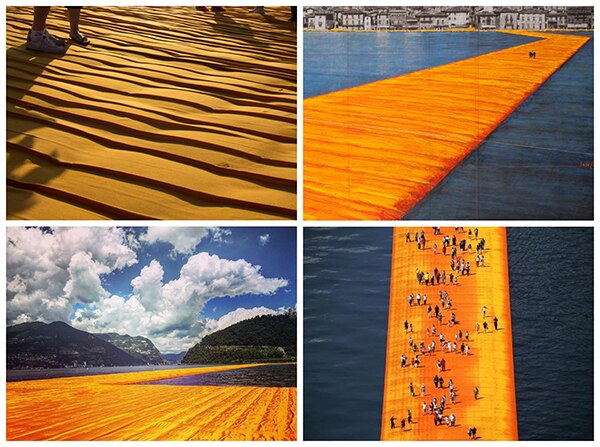
Let’s now take a look at how saffron can infuse our decor style as it lends itself to a Moroccan or tribal feel. Saffron is bright, lively and peppery. Saffron has an exquisite deep quality that can be used sparingly or as an impressive style statement or just let the richness of the color inspire you to create an aromatic and colorful dish infused with saffron to spice up all of your senses.

Saffron is the spice of life!

Featured Image Source: Ask.com

